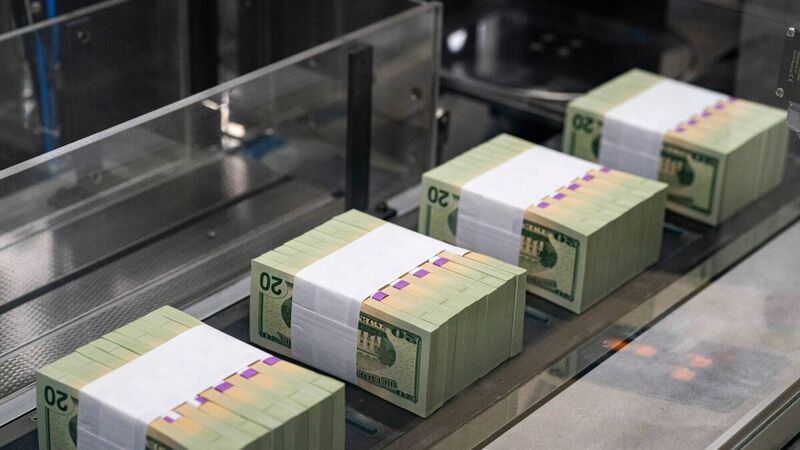John Fahey: The US dollar no longer holds the upper hand

While the dollar is off its recent lows, it is still down between 3%-5% against a raft of other currencies.
As the early stages of May trading on financial markets get underway, it is useful to look back over a very eventful April to try and ascertain what the future may have in store. Tariff-related developments dominated the market discourse and action last month.
The significant shift in US trade policy, with the imposition of new and higher tariffs on its trading partners, caused consternation and uncertainty for markets, governments, and businesses. Words such as tumultuous, turbulent, and volatile were very much in vogue to describe the market backdrop. The IMF noted in its latest World Economic Outlook that “uncertainties climbed to new highs”.
Aside from the falls in equity markets and sharp swings in bond yields (especially US Treasuries), another feature of the market’s reaction was the notable weakening in the dollar. Amid the escalation in trade tensions on the back of the new aggressive US tariff plans, the market started to reassess the outlook for the US economy. Arising from this assessment, it became more and more concerned of the negative consequence for the growth trajectory of the world’s largest economy.
As a result, the dollar fell out of favour on the exchanges, with investors relocating out of US assets as part of the ‘sell America’ trade. The announcement of the 90-day pause to reciprocal tariffs provided some respite for the currency.
President Trump’s negative comments in relation to Jerome Powell’s position as Fed Chair brought further downward pressure to bear on the dollar, as market participants worried about the threat to its independence. This was reflected in EUR/USD trading to a high of $1.157 during the Easter period. For context, this was the pair’s highest level since November 2021 and represented a 7% move from the $1.079 mark seen at the start of April.
The Trump administration's comments recently have become less confrontational in relation to tariffs and trade policy, while also emphasising a desire to, and the potential for, new trade deals. Against this backdrop, Wall Street, including the S&P 500 index, has recovered the ground lost during the month of April.
However, while the dollar is off its recent lows, it is still down between 3%-5% against a raft of other currencies. At the start of the year, we outlined our bias for a weaker dollar over the coming 12 months based on our view that the US economy would start to slow. So, the directional move in the dollar has not been a surprise, but obviously, the magnitude and speed of its weakness has been unexpected.
With still considerable uncertainty surrounding US and in-turn global trade policy, further bouts of volatility for the greenback can be expected. Progress in relation to trade deals may add some support to the dollar.
However, underlying concerns over the outlook for the US economy, combined with more medium-term considerations/vulnerabilities in relation to the US twin deficits (budget and current account), may mean the dollar does not regain its previous level of strength on the exchanges.
It is also important to note that a softer dollar is consistent with the Trump administration’s desire to increase the level of exports the US sells to its trading partners. Thus, a weaker dollar may be both warranted and wanted between now and year-end.
John Fahey is AIB's Senior Economist










